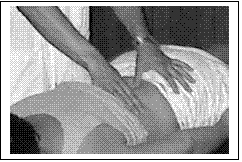True Patient Case Scenario: A Must Read (But not for insurance companies!)
Reference:Clerici CA, et al Mirror therapy for phantom limb pain in an adolescent cancer survivor. umori. 2012 Jan-Feb;98(1):e27-30.
Critchley DJ, et al Effectiveness and cost-effectiveness of three types of physiotherapy used to reduce chronic low back pain disability: a pragmatic randomized trial with economic evaluation. Spine 2007 Jun 15;32(14):1474-81.
A 39-year-old male patient presented with over 20 years of right knee and lower leg pain of severe intensity. He reported that the pain increased with activities such as standing, walking however he often had spontaneous pain, which affected his quality of life. Several years of physiotherapy and various pain medications failed to provide him with any significant relief.
What are some physiotherapy management options for this patient? 1) Strengthening / stretching? 2) Manual therapy / soft-tissue release? 3) TENS, IFC, Laser, Heat, Ice? 4) Orthotics / taping / a brace?
Now let me throw a wrench into this. The patient had had his right leg amputated over 22 years earlier at the age of 17 because of an osteosarcoma. (Clerici et al 2012)
Phantom limb pain cannot possibly be treated with “traditional” orthopaedic approaches, so why do we sometimes continuously treat “phantom back pain” with modalities, endless manual therapy, endless stretching, etc.?
For instance in this RCT (Critchley et al 2007) they compared the effectiveness of manual therapy to a comprehensive stabilization exercise to just talking to the patient using a pain education approach. The conclusion was that for chronic low back pain, all three groups responded equally well with equal improvements in function, however the approx. average cost per patient in the manual therapy group was $750, stabilization $600 and pain education $260.
Now think about it, if you were an insurance company and you had to choose funding treatment for a patient with chronic low back pain, which would you fund? Knowing you get similar outcomes, should the insurance company fund 12 sessions of “traditional physiotherapy” focusing on anatomical structures? or 8 sessions of “pain education” aimed to reduce fear, goal setting and encourage self-management at a fraction of the cost?
The only saving grace of this study for physiotherapists is that physiotherapists (not psychologists) provided the cognitive behavioural education.
Although this was a great study, in my humble opinion the researchers failed to pre-classify patients into who needed manual therapy, who needed stabilization and who needed pain education …one can not possibly lump all patient with low back pain into one pot and expect a good outcome!
Do you think that modalities, intricate manual therapy and specific stabilization exercises are sometimes over-utilized, when all some patients really need is education? Mmmm?something to think about!
Posted on: September 13, 2012
Categories: Lumbar Spine


